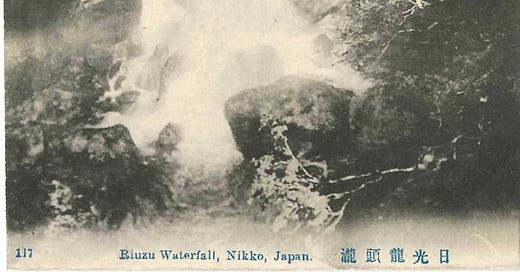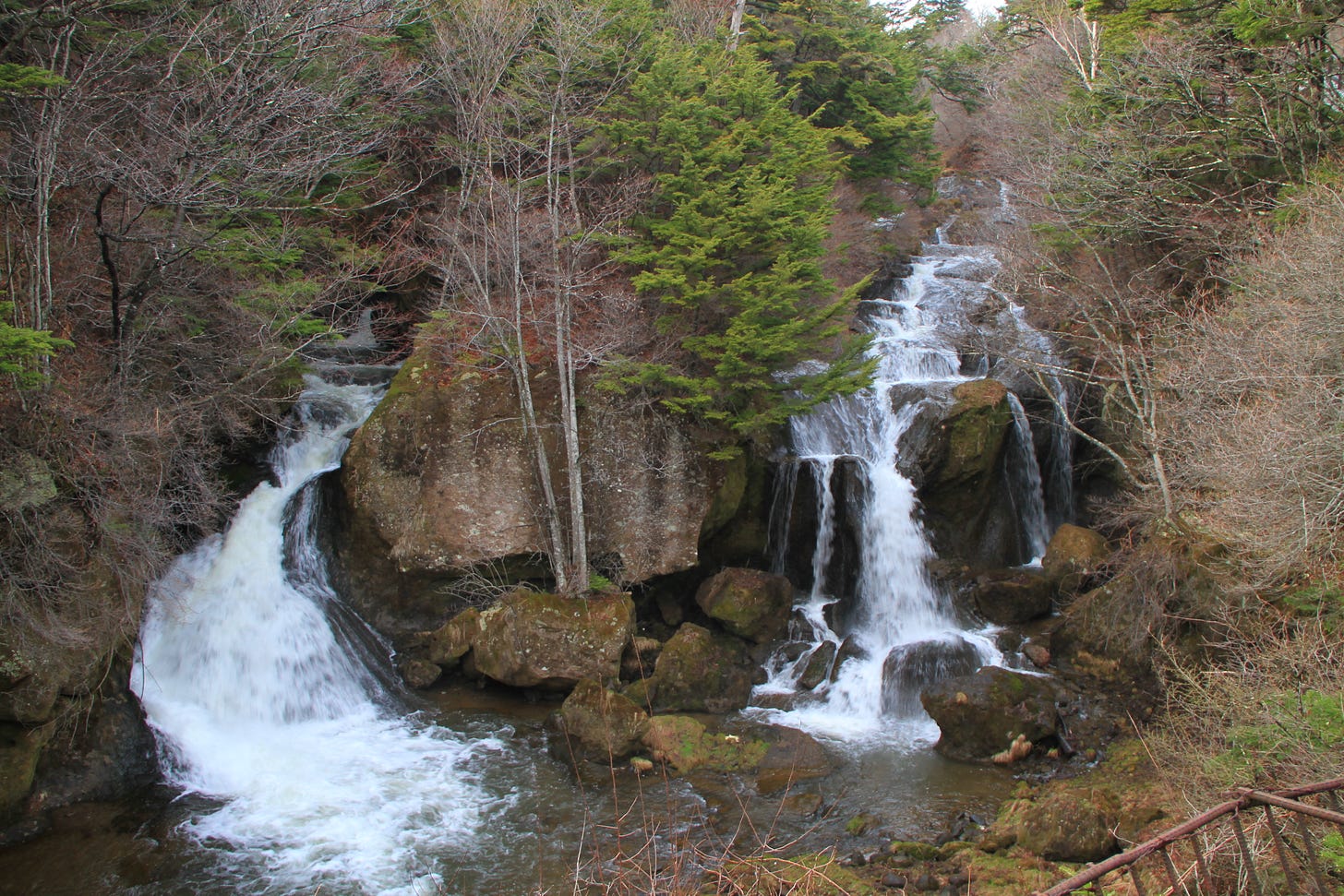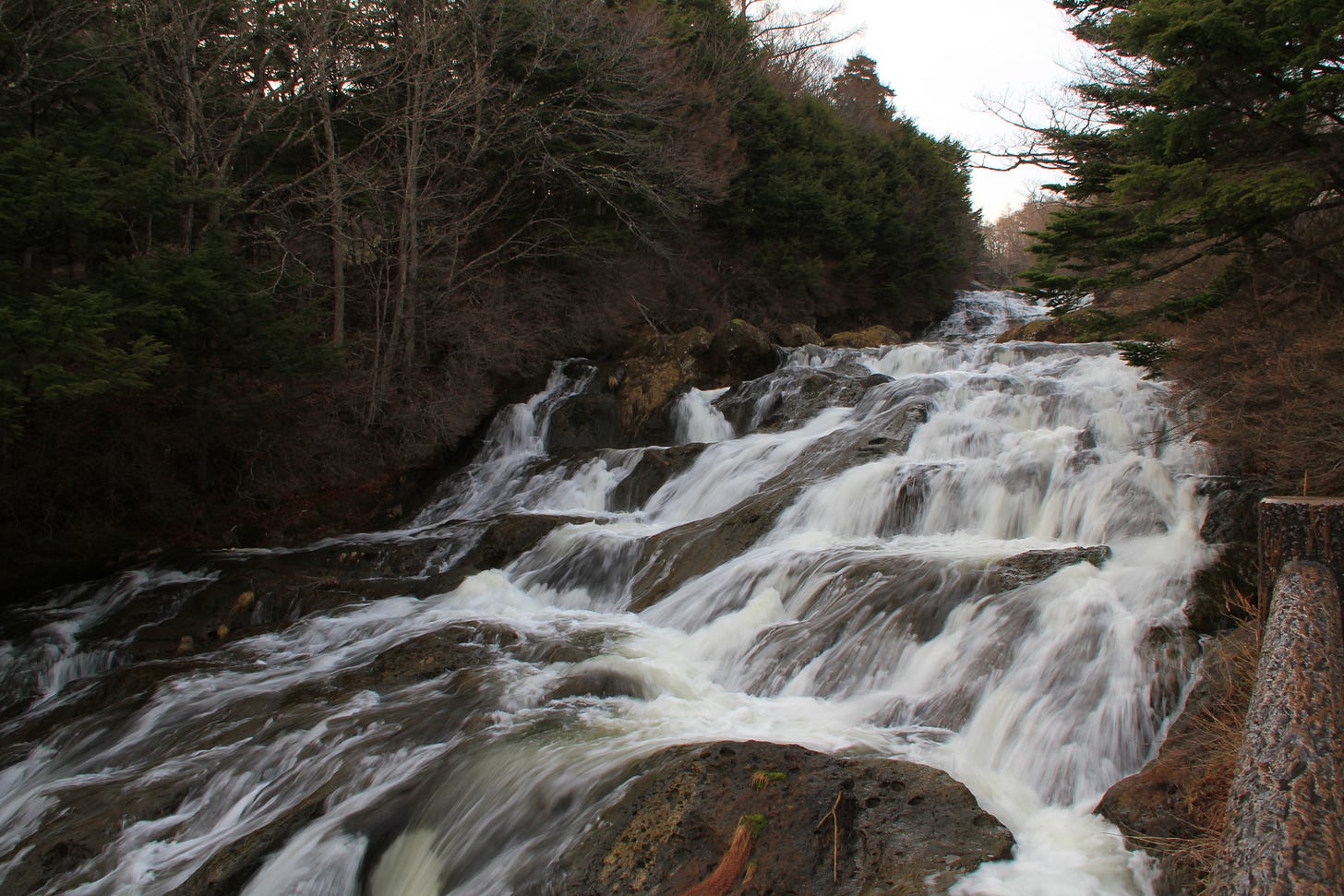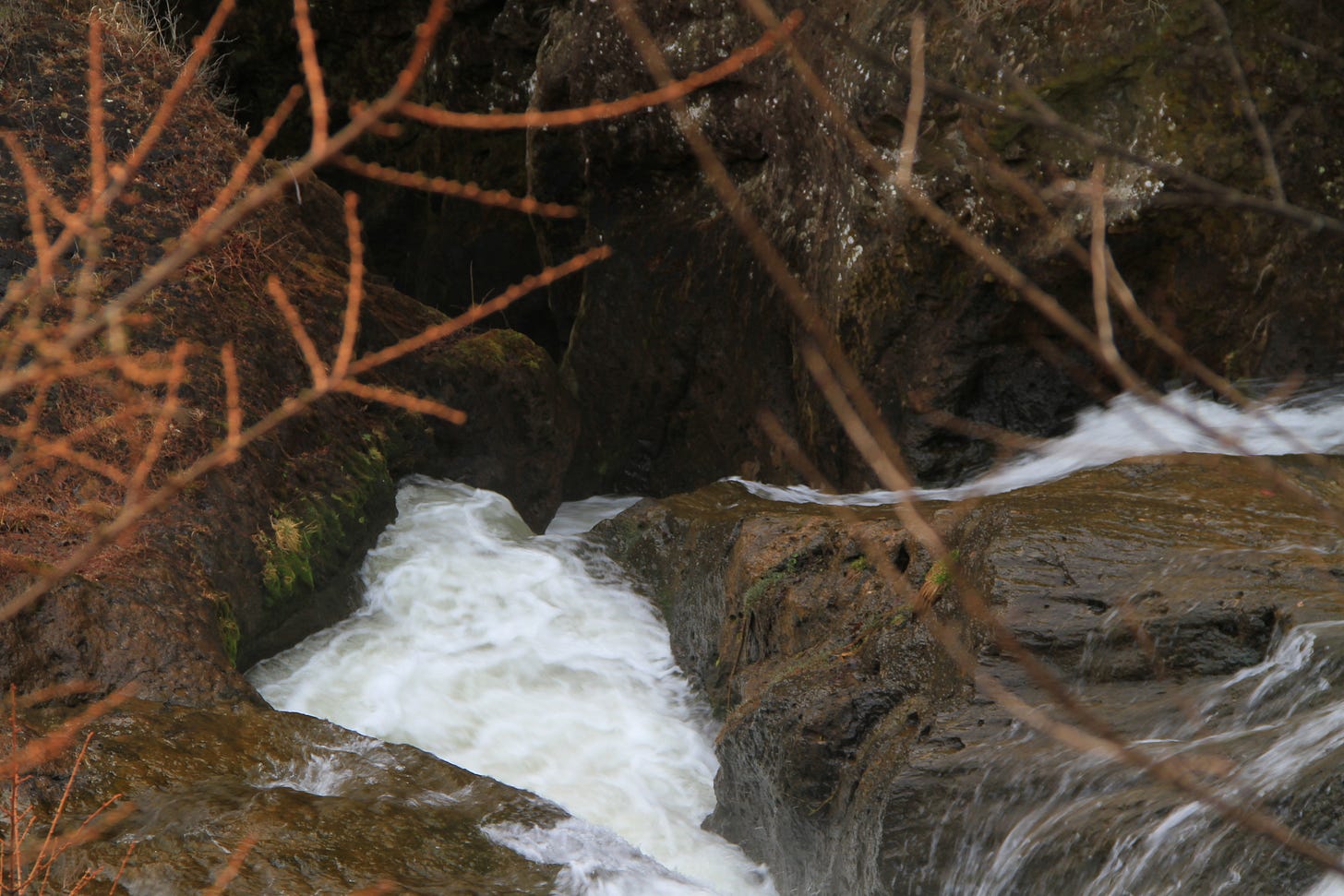竜頭の滝 Ryuzu no taki
There are at least two systems for the romanization of the Japanese language. The founder of one of these, Dr. Hepburn is credited with giving his host the recommendation to open a western style resort which became the renowned Kanaya Hotel that is still in business. As with all languages, Japanese evolves and changes over time. With this post card, we seem to have both situations occurring in the close to a century between its printing and my trip to the same location. The sign that caught our attention as we drove from Nikko to Chuzenji read “竜頭の滝 Ryuzu no taki”. As we can see on the postcard, it was at one time called “Riuzu Waterfall, Nikko, Japan. 瀧頭龍光日”. Is it the same? Take a close look at the post card and my photo immediately following it.
More water was flowing when the shot for the postcard was taken, but it is the same waterfall.
Now, Ryuzutaki and Ryuzu no Taki both mean “Dragon Head Falls”. Why this waterfall is thus named is not apparent in these two views as it consists of two falls, having split a short distance above the point viewed in these two shots. Below is a shot I took of the two, which as my wife and I understand, combined make up the dragon’s head.
Is it now clear to you why these twin falls were named “Dragon Head Falls? No? It wasn’t to either of us either. Beautiful none the less. A path leads up the falls and we took this for a ways before heading back down to the car to continue of trip. Below are photos I took of the river that feeds the falls.
Waterfalls are one of the things we often run across while driving hither and thither that we usually stop for when we see signs for them. We have always found a pleasant walk along good paths, sometimes paved, with benches and a cool, quiet atmosphere. Not just a get out, see, snap a few pics and nothing more to do though one could do so if they chose. We have been lucky that we have always had enough spare time to dawdle a while and enjoy the break.
Below is another waterfall in the area that is in the postcard collection. We did not stop for this one, if we even drove past it. I know nothing about it.














Waterfalls and their rivers certainly has this magical charm to them.
The river does snake back-and-forth by the looks of it? So if you imagine that being its body then the waterfall could be seen as its roaring head, sort-of.
--
I were quite confused for a moment there, but they've mirrored the kanji for some reason.
So it should be 日光、龍頭瀧 and 日光、霧降の瀧.
Regarding the difference in writing to 竜頭滝, it appears to just be using more simple kanji with the same possible pronunciation.
For example, if you look up 龍頭 in the goo dictionary then it will give results for 竜頭.
I also came across a post on note (https://note.com/gatokukubo/n/n336774a5e4e6) that had a short point pointing out that 滝 is 竜 with 水 added. So maybe dragon's head/maw was just some local name for waterfalls in general back in the days? Not unlike how many fancy names in the US are simply "the lake" or "the river" or something along those lines in one of the natives languages.
There is also some interesting opinions on origins and usage differences between 龍 and 竜 here: https://japanese.stackexchange.com/questions/51991/
There's a national park in the area http://www.kirifuri-kogen.jp/ so that second waterfall apparently has no special name itself?